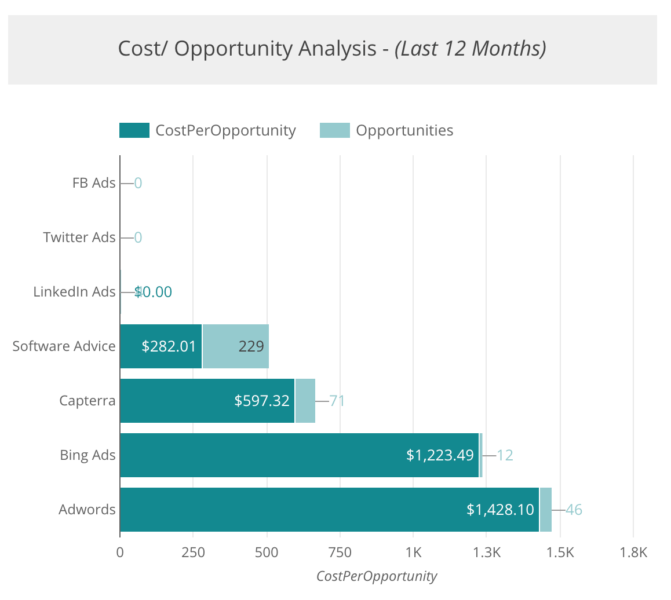
There have been a lot of discussions recently regarding the importance of ranking factors and whether we as SEOs should focus on them.
Since Search Engine Land has been crazy enough to give me a voice, I’d like to weigh in on the subject. In my opinion, 99 percent of the market shouldn’t worry about the idiosyncrasies of ranking factors… yet.
I don’t say this because they’re not important; but instead, because they aren’t the most important things for most marketers to focus on. Instead, it’s time that we focus on the following:
Basic #1: Design
You can drive all the traffic in the world to a site, but if it’s not designed or developed properly, you will not capture its full potential. And yes, sites like Craigslist exist. But you’re not Craigslist, and people most definitely judge the quality of your product or service by the quality of your site.
If you are reading this and thinking, “Duh,” I agree. This is a “duh” piece of advice (that website design is important). But daily I audit websites and wonder why the actual design assets of the site are so poor. At first, I thought it was because people can’t afford a great site. But that’s simply not true. The real issue is how people design and develop sites.
I’d like to take a moment to present a new and better way for 99 percent of the market to develop their websites. It saves you money, too! It’s simple: Keep design, content and development separate.
First, find an amazing freelance designer who has a portfolio you love. Have them design you a full brand guide and website in Sketch. You can now get the design of the site perfect and exactly how you want.
Second, hire a copywriter to craft all your new language and messaging. Lastly, find a WordPress developer on Codeable. Have them build you the exact site you designed into WordPress. Pretty simple, and with this approach you can save tens of thousands of dollars.
Basic #2: Audience research
Keyword research comes after audience research and is part of a bigger marketing basic: understanding how your specific market researches and buys the product or service you sell.
While it seems basic, most SEOs can sufficiently perform keyword research but neglect SERP research. In other words, they put a keyword or term into Moz or SEMrush but forget to do that search themselves to identify what’s actually ranking for that term.
To remedy this, simply put yourself in the position of your audience. Do searches for what you offer, review what the SERP is showing, and ask yourself a few simple questions:
- Is this actually what I would search if I didn’t know this industry?
- How would I modify my query to be more relevant to my needs?
- Are there sites ranking in the top five that list options for the buyer that we’re not mentioned in?
- Do any of these sites have Google display ads?
By asking question one, you can test your biases and your own knowledge of your industry. Often, we take for granted things we know about our industry and assume everyone else does as well.
For question two, if you understand how people modify their queries to get the best results, you can modify your title tags and on-page SEO accordingly.
For question three, if there are other sites in the top five results that mention your competitors, it’s critical that you reach out to the editor or advertise on these sites. If not, you are missing a massive lead generation opportunity. For our portfolio, third-party sites drive sales-qualified leads at about half the cost of AdWords and Bing. 
For the fourth question, maybe you’re not able to get on the list or get hold of an editor. Could you instead simply take out ads on the page via Google’s Display Network or natively? If yes, do it. It’s critical that your brand is consistently prevalent during the buying journey of your target market. SEOs, your own website isn’t the only site people look at when they buy.
Basic #3: Content
OK, you rank for a term, and it’s driving traffic. Great! Now, ask yourself, “Is this content good enough that I would actually stop my research process and explore the solution we offer?” If not, rewrite and improve that content until it starts generating leads, comments and shares.
The last thing 2018 needs is more content. Instead, we need to do less content and focus on quality. The archnemesis of quality content is volume. For 99 percent of the market, as you increase the “scale” of your content velocity, you decrease its quality.
If you truly can’t write four exceptional posts a month… just don’t. Slow down, write one exceptional post, and take extra time (if there is any) to actually promote that post like crazy.
My own greatest problem with my content marketing is that I spend 90 percent of my time creating content and 10 percent of my time promoting it. By slowing down the volume of content I produce, I can actually monetize the time.
You will be exponentially better off flipping that ratio around so that you spend 10 percent of your time creating exceptional content and 90 percent of your time promoting it. If a blog post goes “live” and no one reads it… did it really go “live?”
Basic #4: Attribution
We can do all the tactics and campaigns in the world, but if we as marketers cannot prove the value of them to executives, we will constantly be underfunded and undervalued. It’s 2018, and if you’re not able to track a lead to a sale, then you’re missing a key part of the equation.
At our company, we’ve built a tool that allows us to measure the success of a campaign in any channel. By directly tying our efforts to sales, we’re able to not only prove our worth but also recommend increases or allocation of spend with confidence. Now, we can increase qualified lead volume and allow the customer to grow. Without the proper tools in place to do full-cycle attribution, we wouldn’t be able to grow our clients to their fullest potential.
If you’re looking for an internal software to do this, check out options like BrightFunnel or Bizible. You’ll need a tool like Salesforce in place, but you’ll instantly be able to demonstrate your value as a marketer and properly allocate time and resources.
While much of this comes from a B2B SEO perspective, if you’re able to have the best design in your industry, understand your audience’s buying journey, craft the best content and attribute success, you will grow in 2018.
If you have these basics down, go ahead and discuss ranking factors, test, and adjust your focus and campaigns accordingly. If not, let’s get back to the basics.
Contributing authors are invited to create content for Search Engine Land and are chosen for their expertise and contribution to the search community. Our contributors work under the oversight of the editorial staff and contributions are checked for quality and relevance to our readers. The opinions they express are their own.



